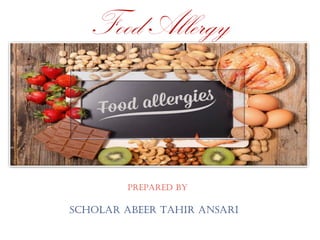
# Traveling by Air with Food Allergies: The Critical Call for Uniform Policies
Food allergies represent a severe, life-threatening health issue that is frequently misinterpreted. For countless travelers grappling with food allergies, navigating airline regulations poses an unpredictable obstacle, as varying accommodations and public skepticism lead to avoidable risks.
## The Obstacles of Air Travel with Food Allergies
Individuals dealing with food allergies often have to traverse a society that doesn’t fully acknowledge the seriousness of their plight. While allergy sufferers take every measure to steer clear of their triggers, their well-being is largely reliant on the awareness and support of those around them.
Recent **notable food allergy-related deaths** have highlighted the risks associated with anaphylactic reactions and the immediate need for heightened public consciousness. As a parent of a child who suffers from a peanut allergy, such accounts are profoundly disturbing—acting as a stark reminder of how unpredictable allergic reactions can be.
### The Variability of Airline Regulations
Even with rising awareness, traveling with food allergies continues to be laden with uncertainty due to fluctuating airline policies. Passengers depending on airline-supplied accommodations frequently discover that these promises are either inconsistently applied or altogether overlooked.
A recent **international study** conducted by the Center for Food Allergy and Asthma Research at Northwestern University (CFAAR) revealed that 70 percent of passengers who were assured accommodations found them unfulfilled during their journey.
Additionally, a Northwestern study published in *JACI: In Practice* indicated that **98 percent of food-allergic travelers experience considerable anxiety while flying**. Some even hide their condition for fear of being removed from flights or encountering social ostracism.
### The Stigma Associated with Food Allergies
Food allergies are often seen by society as a mere inconvenience, rather than a serious health threat. Social media is brimming with examples of travelers ignoring airline allergy procedures, dismissing alerts as overreactions. When they don’t observe an immediate allergic reaction, they presume that food allergies are exaggerated or even faked.
What many fail to grasp is that **every allergic reaction is distinct and unpredictable**. A minor reaction today could escalate into a life-threatening anaphylactic episode tomorrow. There are no tests available that can accurately foresee the severity of future reactions.
### The Risks of Experiencing an Allergic Reaction in Flight
Once in the air, food-allergic travelers encounter significant dangers. Airline personnel may question individuals about the intensity of their allergies, suggesting that accommodations should be based on prior reaction histories. However, **food allergies do not exhibit a reliable pattern**—a mild reaction previously doesn’t ensure a mild one in the future.
Furthermore, experiencing anaphylaxis at 30,000 feet is particularly hazardous. Though epinephrine is the only effective emergency treatment for anaphylaxis, **it is not always readily accessible or appropriately administered** by airline personnel during a crisis.
### Personal Accounts of Airline Indifference
Accounts from food-allergic passengers reveal the gravity of these issues. A family traveling with an 8-year-old child who has life-threatening allergies reported being ridiculed by a flight attendant while seeking promised accommodations. Despite the airline’s allergy guidelines, the crew failed to establish an allergy buffer zone, endangering the child’s safety.
Another account described how an allergic passenger was instructed to **”stay at the back and use an EpiPen”** if he experienced a reaction—while the airline continued to serve tree nuts despite his known allergy. This negligence regarding food allergy safety underlines the pressing need for **preventive measures, not reactionary solutions**. Epinephrine is designed to treat anaphylaxis, not prevent it, and its efficacy is never assured.
## The Necessity for Uniform Airline Regulations
While some airlines have initiated allergy-aware initiatives, the widespread discrepancies in food allergy policies reveal a clear need for **uniform regulations and mandatory training for crew members**. Even those airlines known for being allergy-conscious face challenges when policies are subject to individual crew discretion.
Food allergies are an escalating global health dilemma, and anyone—regardless of age, background, or previous exposure—can develop an allergy at any stage of life. This is **not solely an individual obligation**; ensuring airline safety must be a collective responsibility, with airlines taking proactive steps to reduce risks for at-risk passengers.
### Key Policy Suggestions
To make air travel safer for food-allergic passengers, the following actions should be implemented:
1. **Uniform Global Guidelines** – Each airline must establish clear, enforceable policies regarding food allergy accommodations.
2. **Crew Education** – Flight attendants need formal education on food allergies, anaphylaxis, and emergency response processes.
3. **Accessible Epinephrine** – Airlines should maintain easily reachable, auto-injectable epinephrine in their medical supplies.
4. **Pre-Boarding for Seat Cleaning** – Passengers should be permitted to pre-board